Białystok
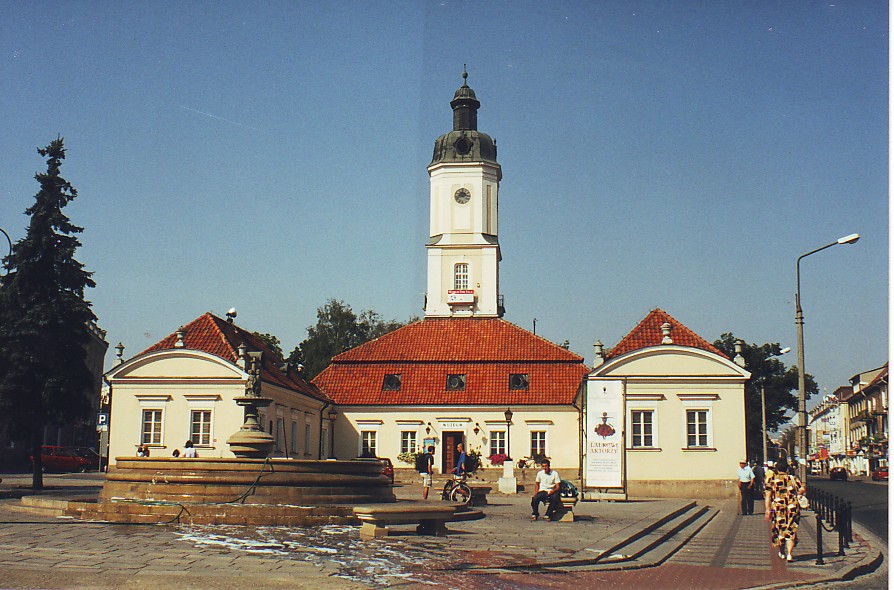
The town hall building in Białystok, now the regional museum
Distance
Population
292.000 (2004)
Location and history
Białystok, the capital of the Podlasie region and the largest city in northeastern Poland, is located on the river Biała, a tributary of Supraśl.
In the 14th century. Białystok was a village located on the trade route between Warsaw and Grodno. From 1659 the town was Stefan Czarniecki’s property; then it came into the genus Branicki’s own. It was the Branicki family that made Białystok a residence of significance. In 1749, the city was granted commercial property rights. In the middle of the 18th century. Hetman Jan Klemens Branicki remodeled the family's former property in the city into a splendid mansion with associated French park design. Hetman Branicki supported art and science and in his time attracted many artists, architects, doctors and others. to the city. The historic center with the triangular square forms (the current Rynek Kościuszki). The craft subjects are developing strongly. In 1824 the first textile factory was founded, but especially after 1834 the textile industry developed very lively. During the second half of the 19th century. the city's population grew to sixfold. Geographical and historical conditions made Białystok a city where people of different culture, religion and nationality: Poles, Russians, Belarusians, Jews and Germans lived together. It was also here in Białystok that Ludwik Zamenhof invented the universal art language: Esperanto.
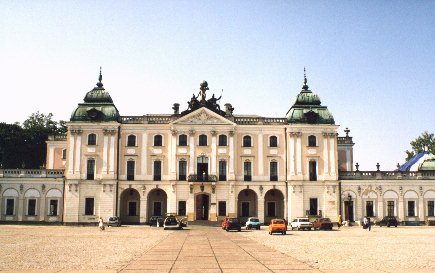
Branicki Castle in Białystok
- Białystok suffered greatly during both World War I and World War II. The last war meant a loss of 80% of the building stock, 74% of industrial capacity and 55% of the population. Totally destroyed were the great Jewish quarter. After the war, a rapid rebuilding and modernization of the city followed.
Today, Białystok is one of the fastest growing cities in Poland and has become a center for the textile, metal, construction and food industries. Well-known is the city's bazaar, where you can buy the most exotic items from equally exotic parts of the world.
Białystok is home to a university as well as several other colleges. There are 2 theaters, several museums and art galleries as well as a Philharmonic Orchestra.
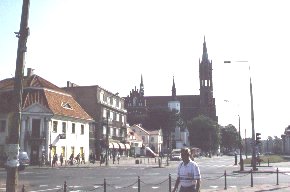
From central Białystok
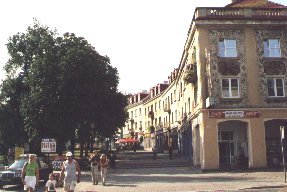
From central Białystok
Tourist attractions
Branicki Castle (built 1691-97, remodeled in the 18th century) and the castle park.
Bycentret from the 18th century.
Church of Our Lady of the Assumption from the 17th century.
City Hall from the 18th century.
Toldkammeret from the middle of the 19th century, the so-called “Napoleon's house”
Kruzensztern Mansion in eclectic style.
Hasbach Mansion from the 19th century.
Becker factory – ul. Swiętojańska 15
The Russian Orthodox Saint Mikołaj Cathedral in the classic style of the 19th century.
The Roman Catholic Saint Wojciech Church from 1909-1912 (Former Evangelical Church)
Planty City Parks , created 1925.
monuments for i.a. priest Jerzy Popiełuszko, Marshal Józef Piłsudski and “Białystok’s defenders in 1939”.
Surrounding Area
To the east and north of the city extends the Knyszyn primeval forest, which is interpreted as a nature park. The park is located between picturesque highlands in the uplands of the rivers Supraśl and Sokołda. The area is characterized by a plant growth typical of the tajga. Here, first of all, pine forests, mixed with oak and birch, grow; in addition, swamp forests with elm trees are found near moist peat bogs. There are several protected plant and animal species in the primeval forest. Plants include golden plum (arnika montana), wreath lily (lilium martagon) – and of animals: screaming eagles, tears, black stork, raven, los and bison.
Other attractions:
Wasilków – small town with approx. 8200 inb., About 6 km to the north. In the vicinity there are several reserves:“Czarna Rzeczka”, the landscape reserve “Góry Lence”, the nature reserve “Jałówka”, the reserve “Antoniuk” and the landscape reserve “Polana Kopisk”.
Wasilków
Rybniki – approx. 11 km to the north. In the reserve ‘Krzemianka’ near Rybniki are some flint mines that are more than 3 thousand years old. The archaeologists believe that they are preserved in excellent condition; they are considered some of the best finds that testify to prehistoric mining.
Supraśl – 14 km to the northeast – in 2001 was recognized as a health resort. Especially the elderly, the rehabilitation center and children with respiratory disorders are treated. – See the special page about this city.
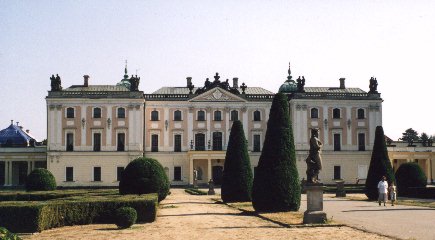
Branicki Castle seen from the park
Accommodation
Booking.com
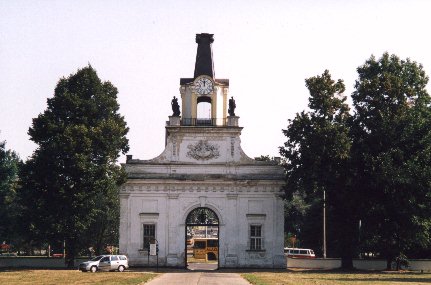
Branicki Castle. gatehouse
Other Internet sites and sources
Białystok (Polish, English, German and Russian version)
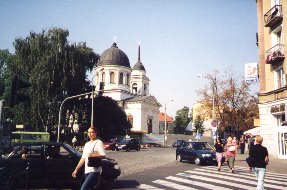
From central Białystok
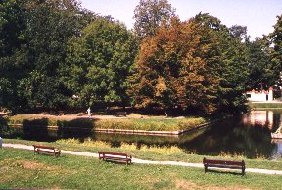
From Branicki Park
Translated into English by Google Translate. Spangshus.dk accept no liability for any errors or omissions in translation.
Map

Rating
Search
Most used tags
churches (205) Castles (86) Monasteries (79) Town walls (74) Lakes (71) Town halls (67) Rivers (65) Castles1 (62) Mansions (55) Museums (51) Regional museums (38) Town gates (36) Abbey churches (35) Castle ruins (30) Cathedrals (26) Forests (25) Health resorts (24) Mounds (23) Water sports (23) National parks (22)Click for all tags
Denne side er også tilgængelig på dansk. This page and contents is (c) Copyright 2018- www.spangshus.dk. Based on Inviator software by ISCA Software